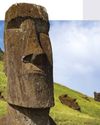
Designed to make long, straight cuts in sheet material-like plywood-these saws are more accurate and easier to use than table saws. But their singular purpose and high price (some more than $1,000) made them hard to justify for folks who need one only occasionally. That has all changed, though, as many companies have recently added track saws to their lineups. We called in a range of saws to test how well they work and see what their differences are, in case you're considering getting one yourself.
HOW WE TESTED
To evaluate these track saws, we used them to cut through dense, 2 x 4-foot, 9-ply, 4-inch maple plywood. We set up the tracks, adjusted the saws' depths, and made repeated cuts 48 inches long at both 45 and 90 degrees. We started our cuts, both off the ends of the plywood and by plunging the blades into the wood.
To test maximum cut depth, we stacked up three sheets of the 3/4-inch plywood, set the saws to their deepest setting, and then measured how deep the kerf was for each saw. We assessed the track saws based on how easy they were to set up and use, the quality of the sawed edge they left, and how much effort it took to push them along the track.
DIY TRACK
If you want to mimic the accuracy of a track saw without the investment, you can build a makeshift track to use with your own circular saw. To do this, you'll need a sheet of plywood with a clean factory edge.
1/ Mark the factory edge (A) and cut 2 to 3 inches off of it.
2/Cut an additional 8 to 9 inches (B) off the sheet of plywood.
3/ Position the 2-to 3-inch strip (A) on top of and along the edge of the larger strip (B), with the factory edge facing the middle.
4/Screw the narrow strip to the wider strip.
Diese Geschichte stammt aus der January - February 2023-Ausgabe von Popular Mechanics US.
Starten Sie Ihre 7-tägige kostenlose Testversion von Magzter GOLD, um auf Tausende kuratierte Premium-Storys sowie über 8.000 Zeitschriften und Zeitungen zuzugreifen.
Bereits Abonnent ? Anmelden
Diese Geschichte stammt aus der January - February 2023-Ausgabe von Popular Mechanics US.
Starten Sie Ihre 7-tägige kostenlose Testversion von Magzter GOLD, um auf Tausende kuratierte Premium-Storys sowie über 8.000 Zeitschriften und Zeitungen zuzugreifen.
Bereits Abonnent? Anmelden

Henrietta Lacks - It's not surprising that Henrietta Lacks-whose
It's not surprising that Henrietta Lacks-whose "immortal" HeLa cells were pivotal in developing treatments for diseases such as polio, HIV/AIDS, and COVID19-is referred to as "the mother of modern medicine." But Lacks's legacy is complicated due to the ethical concerns surrounding the use of her special cells. Lacks, who died of cancer at age 31 in 1951, was never aware that her cells led to significant medical advancements or that they had been taken without her consent. And even now, her strange case raises questions about the morally dubious methods through which we achieved unquestionably positive breakthroughs in medicine.

Chasing an Asteroid - How NASA defied incredible odds to get its asteroid-hunting osiris-rex mission off the ground and in the process upended what we know about our solar system.
Dante Lauretta sat in the backseat of a helicopter hovering high above a remote patch of Utah desert, waiting for a small, twinkling speck in the sky to plunge toward earth.If you didn't know better, you might think what was beginning to burn through the skies above the American southwest in the early hours of September 24, 2023, was a shooting star. But it wasn't a shooting star. Or a meteor. It was a dishwasher-size capsule filled with bits of ancient asteroid-priceless matter from the dawn of the solar system. In other words, it was a treasure chest moving at 27,000 miles per hour and sizzling at a temperature half that of the sun's surface.

Whether We Live in a Simulation - scientist Melvin Vopson, PhD, studies this exact thing- the possibility that the universe might indeed be a digital facsimile. And he claims to have evidence.
In the 1999 film the Matrix, Neo discovers A truth to end all truths-the universe is a simulation. While this premise provides fantastic sci-fi fodder, the idea isn't quite as relegated to the fiction section as one might expect. . In fact, University of Portsmouth scientist Melvin Vopson, PhD, studies this exact thing- the possibility that the universe might indeed be a digital facsimile. And he claims to have evidence.

The Ancient Language of Easter Island - Today, humans inhabit- or have, at the very least, explored- pretty much every corner of the planet. But that immense proliferation of Homo sapiens across the globe was a slow process.
With the first humans leaving Africa between 60,000 and 120,000 years ago, the species slowly spread across the Earth over many millennia. And one of the last places these ancient humans made their way to was the southeastern Pacific island of Rapa Nui, known more broadly as Easter Island.Located 2,360 miles off the coast of Chile, Rapa Nui is one of the most isolated places in the world. Its native people, who are also named the Rapa Nui, first arrived on the island's shores between A.D. 1150 and 1280, and lived in isolation until the arrival of Dutch navigator Jacob Roggeveen in 1722.

Underwater UFOs - A retired U.S. Navy admiral believes that the government should look to the oceans to help solve a mystery in the skies.
A retired U.S. Navy admiral believes that the government should look to the oceans to help solve a mystery in the skies. Rear Admiral Timothy Gallaudet, former Oceanographer of the U.S. Navy, recently published a paper arguing that unidentified anomalous phenomena (UAP, more commonly referred to as UFO) and unidentified submersible objects (USO) are linked, and should be studied further.

Synching Up Our Circadian Rhythms - If you've ever done any kind of long-distance travel, or just woken up feeling under-rested thanks to daylight saving time, you know how important your circadian clock is.
If you've ever done any kind of long-distance travel, or just woken up feeling under-rested thanks to daylight saving time, you know how important your circadian clock is. Like many things in your body, your circadian rhythm is more complicated than it might seem on the surface. Rather than being entirely brain-based, it's actually controlled by a collection of several circadian clocks (central and peripheral) that all work together to keep your gears turning like a well-oiled machine.

SKINWALKER RANCH REVEALED
The 512-acre ranch has captivated real-estate tycoons, TV producers, and the U.S. government. What are they searching for?

Upgrade Your Living Room With This DIY - MID-CENTURY COFFEE TABLE
This project is easy to build and customize to fit your space.

INDISPENSABLE LESSONS FROM A POP MECH LEGEND
With people moving around so much these days, it's perfectly natural to wonder how an editor can just come along and stick like a barnacle to the hull of Popular Mechanics, lasting for 35 years.

SAVING THE SUGAR BUSH
A technological revolution has transformed the ancient tradition of sugar making-with big implications for local economies and ecosystems imperiled by climate change.